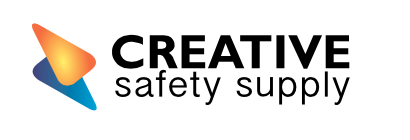Data Makes a Better Business
They might say that ignorance is bliss, but your business is one area where this is decidedly not true. In fact, knowledge is what your business is built on, and you can gain knowledge through data collection and analytics, regardless of your business size.
Let’s dive into a few ways that data can propel your organization forward.
What is Data?
While this might seem like a simple question on the surface, it’s important to understand the types of data you need to run your business and be a productive and essential employee. While this will vary from operation to operation, most businesses will benefit from knowing hard numbers as it relates to the following key metrics:
- Safety
- Inventory
- Efficiency
- Work-in-process (WIP)
- Quality
- Customer satisfaction scores
- Errors and Rework Rate
- Labor Costs
- Material Costs
- Cycle Time (Labor)
- Lead Time (Total Duration)
- Sales
- Profit Margin
It also includes categorical data to help segment the data into groups, such as
- shopping habits, region, work station, worker, product type, and customer demographics.
Improvement Techniques
There is almost an unlimited variety of improvement processes and techniques to leverage this data and make your processes run more effectively. Your industry, business size, and willingness to put in the work will dictate what you use and in which order. A few examples to consider are:
- Lean Six Sigma. This is essentially the process of reducing the steps it takes to get your products and services to your customer and reducing variation or inconsistency in outcomes. In many environments, the time it takes from order to delivery is filled with delays, fluctuations and long wait times. Evaluate this “dead space” where handoffs occur between process steps to look for areas where you can create a seamless transition. Your ultimate goal is system optimization, which will reduce the 8 types of waste (TIM WOODS) from transportation, waiting, overprocessing, defects and getting to know your employees and utilizing their skills in the most efficient way. You are also striving to understand how the data you collected varies across different factors, such as day of the week, employee, department, customer type and equipment. Standardizing the work to be more consistent and predictable will reduce costs and provide more reliable performance to your customers.
- Customer relationship management. Customer relationship management (CRM) uses customer metrics to help you create a better customer service experience, cross-sell more efficiently, and attract and retain new customers, according to CIO online magazine. It is highly useful in generating leads and retaining and expanding sales to existing customers. Spend some time evaluating different CRM software solutions, including Zoho, Salesforce, and Insightly. Your CRM can also hold onto personal information about your customers, which can help you better personalize their experience with your company.
Digging Into Data to Improve Your Bottom Line
More than just helping you identify areas to increase efficiency, data is also useful when it’s time to decide on products to sell, products to let go of, and those to steer clear of all together. You might use data on real estate trends to decide whether to continue offering beige pillows at your store or if you should pull them off the shelves altogether. In this example, you can pull data from public sources, such as catalogs or current real estate sales (homes decorated with outdated design elements may sell for less per square foot than classically-designed properties).
Data comes from everywhere. The technologies have greatly improved (think of wearables and your smartphone), and the costs of gathering, collecting and storing data have come down in price tremendously over the years, so it requires less time and effort than it used to. The challenge is understanding what to do with this information and how it can impact decisions in the business. According to technology thought leader Bernard Marr, even small businesses can get in on the big data game. The cost of a laptop or iPad and a free spreadsheet platform like Google Sheets make it easy for small businesses to be able to make data-driven decisions.
When you are ready to grow your business, make use of the information and tools around you. We are lucky to live in the digital age, where technology and processes and the data to back them up are never more than a few clicks away.




















